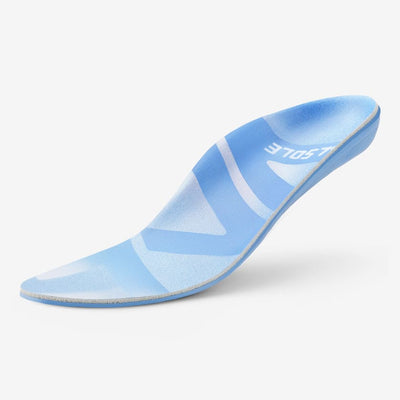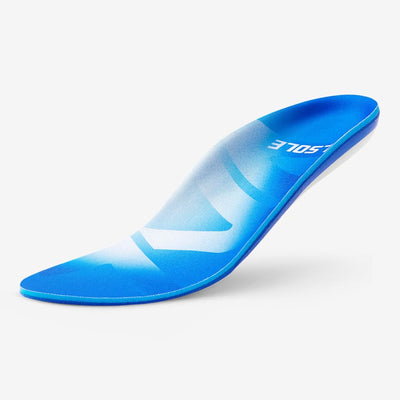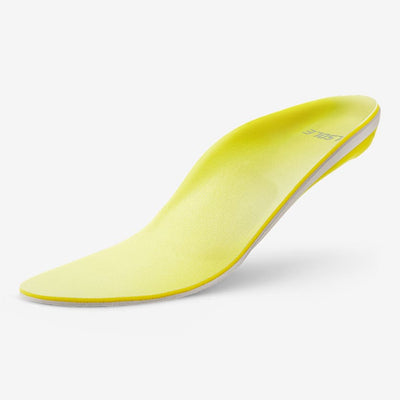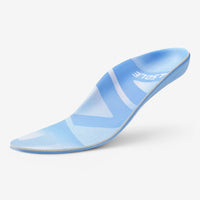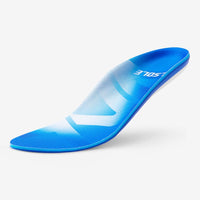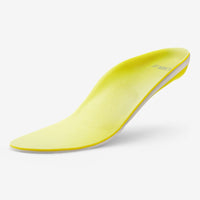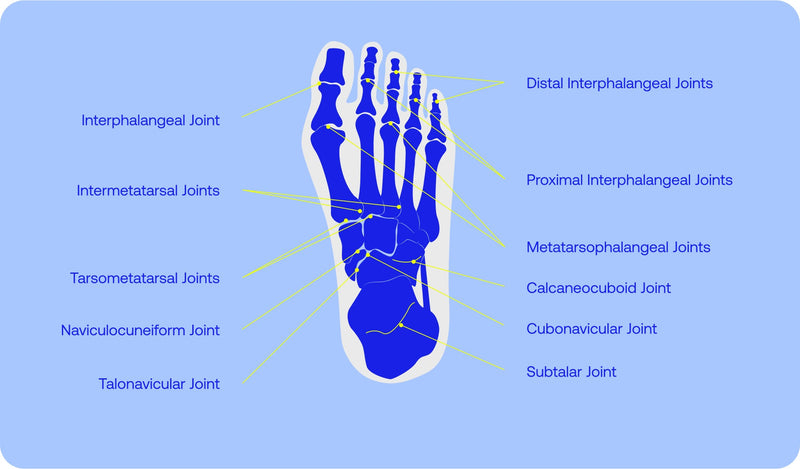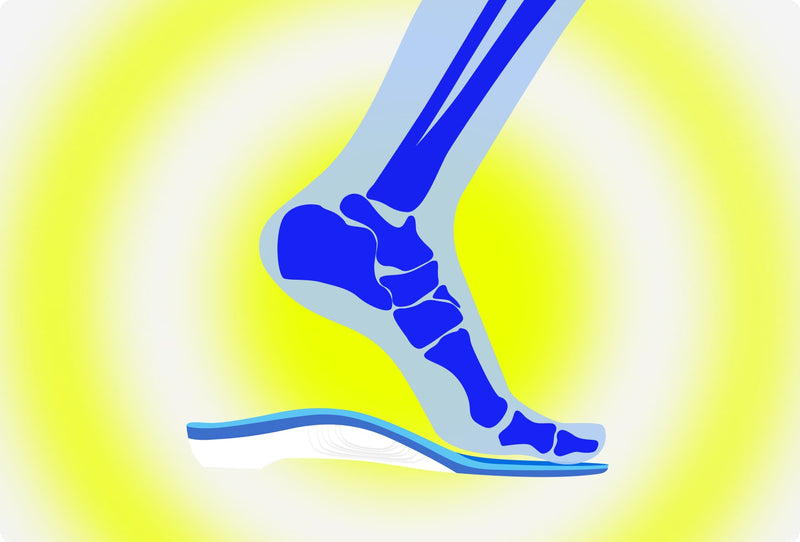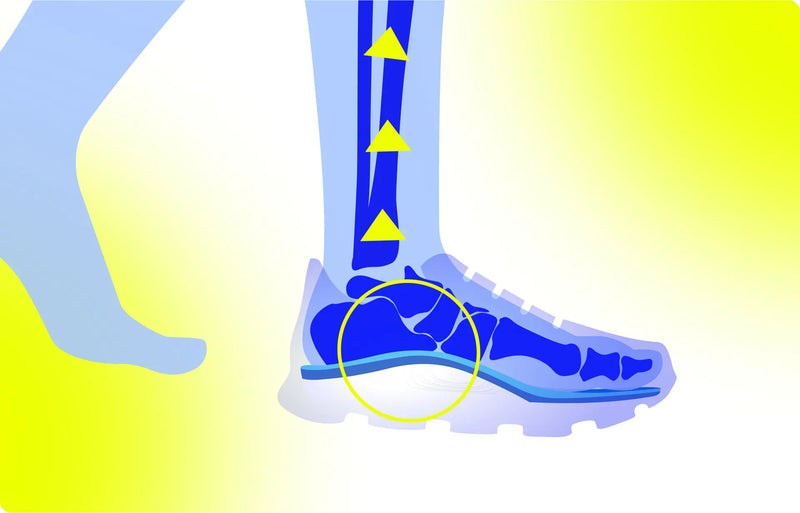Insoles for Elderly Footcare

As the human body ages, changes in mobility, independence, and quality of life hinge on the ability to move freely and comfortably, especially when aging feet are often beset by challenges such as arthritis, diminished cushioning, balance issues, and chronic discomfort. Foot care, in this case, becomes a necessary incorporation into routine for preserving overall wellness. Among the various solutions available, insoles are recognised as underrated yet indispensable tools, offering relief and support tailored to the unique and often unexpected needs of aging feet.
The Science Behind Insoles for Elderly Footcare
Foot health in older adults is affected by a mixture of biomechanics, poor circulation, bone fatigue, and sensory input. Shoe insoles provide the support that works to target these areas through:
-
Cushioning and Pressure Redistribution: With age, the natural fat pads in the feet thin, reducing their shock-absorbing capabilities. This exacerbates discomfort and heightens the risk of pressure points and calluses. Insoles engineered with advanced cushioning materials mitigate these issues, absorbing impact forces and redistributing weight evenly across the foot (Chevalier et al., 2020).
-
Arch Support and Structural Alignment: Fallen arches and overpronation are common among seniors, causing undue strain on the feet, knees, and hips. When facing shifts and changes in arch support, insoles serve as a great intermediary to aid in alleviating pain associated with conditions like plantar fasciitis and arthritis (Chevalier et al., 2020).
-
Stability and Balance Enhancement: One of the gravest risks to seniors is falls, often caused by compromised balance. Insoles with textured surfaces or specific rigidity can enhance sensory feedback and improve postural control, significantly reducing the likelihood of falls (Menant et al., 2020; Deleu et al., 2020).
Targeting Common Foot Conditions in Seniors
Aging feet are vulnerable to a variety of conditions that can impede mobility and diminish quality of life. Tailored insoles can provide targeted relief for these issues:
-
Bunions: By redistributing pressure and cushioning the affected area, insoles reduce the discomfort and inflammation caused by bunions.
-
Plantar Fasciitis: Arch-supporting insoles alleviate strain on the plantar fascia, promoting healing and reducing the sharp pain often felt in the heel.
-
Arthritis: Shock-absorbing insoles, crafted with soft and pliable materials, provide much-needed relief for individuals with arthritic joints in the feet or ankles.
-
Foot Swelling in Elderly: This condition, frequently linked to poor circulation, prolonged standing, or systemic health issues, can be addressed with insoles offering gentle compression and proper weight distribution (Chevalier et al., 2020).
-
Drop Foot: Insoles designed to support the forefoot and encourage dorsiflexion can help manage the symptoms of drop foot, improving mobility and reducing strain on the lower extremities (Menant et al., 2020).
What Causes Foot Swelling, Pain and Foot Drop in Elderly Individuals?
This common condition often stems from a combination of physiological changes and chronic health conditions. Venous insufficiency—where veins struggle to return blood efficiently to the heart—is a significant contributor, often leading to pooling of blood and fluid in the lower extremities. Other causes include congestive heart failure, which impairs circulation, and kidney dysfunction, which affects the body’s ability to manage fluid balance.
Prolonged immobility, a common challenge for seniors, further exacerbates swelling due to reduced muscular activity in the legs. Fortunately, insoles with pressure-relieving designs can alleviate discomfort by redistributing weight, improving circulation, and reducing localized swelling (Deleu et al., 2020).
Foot drop is a frequent occurrence in elderly individuals and serves as a debilitating condition, characterized by causing difficulty lifting the front part of the foot, often resulting from nerve damage associated with serious health conditions like stroke, diabetes, or multiple sclerosis. Foot drop can make walking a significant challenge, increasing the risk of tripping and falling. By providing targeted stabilization and encouraging proper foot mechanics, insoles that help in lifting the arch offer much-needed support and promote safer, more confident movement (Menant et al., 2020).
With age, the cumulative effects of wear and tear on the feet become more pronounced, giving rise to a range of painful conditions. Osteoarthritis, often referred to as the "wear-and-tear" arthritis, affects joint function and contributes to chronic discomfort.
Plantar fasciitis, another prevalent issue, results in sharp, stabbing pain in the heel due to inflammation of the connective tissue along the sole. Bunions, caused by misaligned joints in the big toe, can lead to persistent soreness and swelling.
Insoles tailored to address these specific problems can provide relief at the source, offering cushioning, arch support, and enhanced alignment to reduce pain and improve overall mobility (Chevalier et al., 2020).
The Role of Foot Exercise Machines and Foot Exercises for the Elderly
While insoles offer vital support and cushioning for aging feet, other tools, such as foot exercise devices specifically designed for seniors, provide a holistic approach to foot health. By promoting better circulation, these devices can help reduce swelling, alleviate discomfort, and prevent further complications stemming from immobility, which is particularly important for individuals who experience poor blood flow due to aging or underlying health conditions. Additionally, they are instrumental in reducing stiffness, a common issue among older adults, by encouraging gentle joint mobility and improving overall flexibility.
For seniors with conditions like arthritis or plantar fasciitis, foot exercise machines can be transformative. Arthritis often leads to joint pain and inflammation, which restricts movement and weakens the surrounding muscles. A foot exercise machine provides a low-impact solution, targeting specific areas of the foot and ankle to ease tension and build strength. Similarly, for those battling the persistent heel pain of plantar fasciitis, these devices deliver therapeutic motions that stretch and relax the plantar fascia, aiding in recovery while complementing the arch support and cushioning offered by insoles.
Foot exercise machines are also excellent for enhancing muscle tone in the lower extremities. By engaging the feet and ankles in controlled, repetitive motions, these devices help seniors maintain strength in critical stabilizing muscles, which is essential for balance and fall prevention. Some machines incorporate massage features or gentle vibrations, adding an extra layer of relaxation and promoting lymphatic drainage, further addressing foot swelling and discomfort.
For those who prefer simpler, portable options, manual foot exercisers like rollers, stretch bands, or pedal exercisers are effective alternatives. These tools allow seniors to perform targeted exercises in the comfort of their homes, enabling them to stay consistent with their foot care routines. Whether used in conjunction with insoles or as a standalone solution, foot exercise machines and devices empower seniors to take proactive steps toward maintaining mobility, independence, and overall foot health (Chevalier et al., 2020).
Finding the Right Insoles
Selecting an insole that is built to support the relevant conditions can make a big impact in overall foot health for seniors. Among the many options available, VALSOLE insoles stand out as tailored solutions to meet a variety of needs. These insoles are specifically designed to address common foot conditions experienced by the elderly while providing enhanced support and cushioning:
-
VALSOLE Stable Support Insoles
Perfect for those who struggle with balance or stability, these insoles offer reinforced arch and heel support. By aligning the foot and ankle, they minimize strain, improve posture, and promote secure, controlled movements, significantly reducing the risk of falls. -
VALSOLE Fascia Soothe Insoles
These insoles help alleviate pain for individuals dealing with plantar fasciitis, a common cause of heel pain in the elderly. They feature targeted arch support and enhanced heel cushioning to alleviate tension in the plantar fascia, promote healing, and reduce sharp, stabbing discomfort during movement. -
VALSOLE Heel Relief Insoles
Designed to address heel pain caused by conditions like heel spurs or general discomfort, these insoles provide extra padding and shock absorption in the heel area. They redistribute pressure effectively, reducing stress on the heel with every step and making them ideal for prolonged standing or walking.
Through implementing the different methods mentioned above, seniors can find a solution that is not too difficult to integrate into their daily routine and is tailored to their specific needs. Whether the goal is improved balance, relief from plantar fasciitis, or heel pain reduction, VALSOLE insoles provide a targeted approach to elderly foot care. For best results, consulting with a podiatrist can ensure the ideal fit and maximum benefit from the suggestions for every step of the journey.
References
1. Chevalier, T. L., Chockalingam, N., & Naemi, R. (2020). Footwear, insoles, and orthoses are important components of fall-prevention strategies. Journal of Aging Research, 12(3), 34-41. https://pmc.ncbi.nlm.nih.gov/articles/PMC7428319/
2. Deleu, P., & Taylor, L. R. (2020). Shoe insoles enhance balance control in the elderly. Gait & Posture, 14(2), 102-108. https://www.sciencedirect.com/science/article/abs/pii/S0958259220301061
3. Menant, J. C., Steele, J. R., Menz, H. B., Munro, B. J., & Lord, S. R. (2020). Foot orthoses and balance in healthy older people. Journal of the American Podiatric Medical Association, 99(1), 1-6. https://www.nashvillepodiatry.com/blogs/item/149-foot-orthoses-and-balance-in-healthy-older-people

